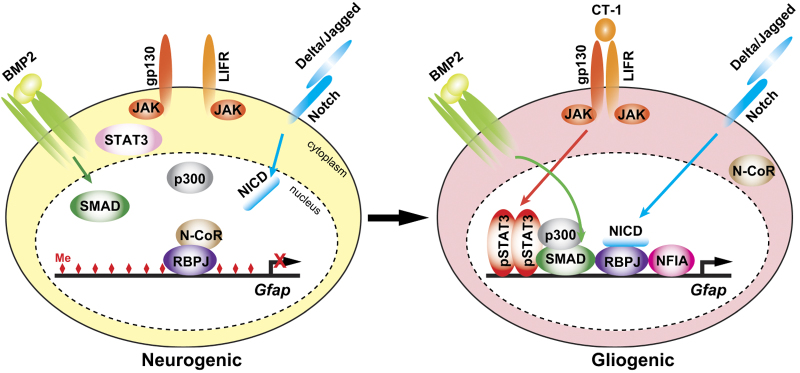Figure 1.
Temporal regulation of Gfap gene transcription in NSCs in response to gliogenic signals. In the early-neurogenic period, the Gfap promoter including STAT3-binding site in NSCs is highly methylated (diamonds in red), severely limiting access by transcriptional activators downstream of gliogenic signals. Moreover, repressor complex containing N-CoR, a co-repressor, may associate with RBPJ on the promoter.70–72 After acquisition of gliogenic competence, NFIA induces demethylation of the Gfap promoter, and the activation of JAK/STAT signaling via gp130/LIFR by increase of a ligand CT-1 secreted from neurons leads to the formation of STAT3/SMAD/p300 complex on the promoter in co-operation with BMP signaling. The translocation of N-CoR to the cytoplasm may allow association of NICD to RBPJ, resulting in derepression and activation of Gfap promoter in the astrocytic differentiation.

